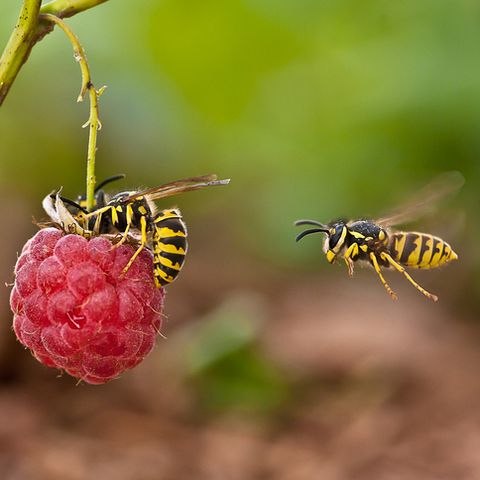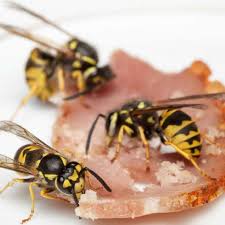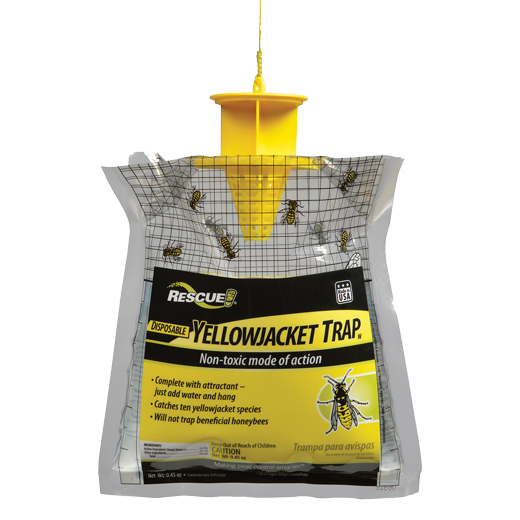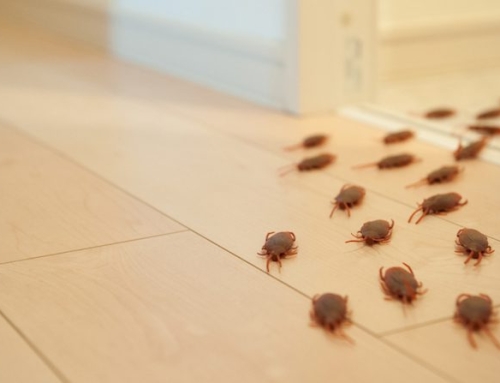The most unwanted of all summer BBQ guests, wears a black and yellow jacket and packs quite a punch (er… sting!). Since it’s July and patio season is in full swing, here are some of our best tips for getting the wasps to change their BBQ RVSP from yes, to HELL NO, and keep your yard stinger-free!
If you’re the proactive, DIY, type of person (good on ya!) there’s a few things you can do to help protect your property. These tips include keeping wasps from entering your home, securing garbage/waste bins, practicing good BBQ etiquette, and, for the super dedicated, some creative deterring gardening!
Keep em out!
Preventing wasps from entering your home is an important step in keeping your yard wasp free during the summer months. Wasp queens will enter homes to overwinter, which increases likelihood of a nest being built nearby in the following spring/summer season. To avoid having the Queen B shack up in your walls for the winter, make sure to keep the structure of your home in tip top shape. Pay extra close attention to the edges of siding and places where power lines enter the home. Other things to watch for are broken panels and any cracks in the walls. The best time of year for home repairs of this type is late fall or early spring when wasps are not especially active.
Clean it up!
Keeping garbage bins securely closed might seem obvious to some, but garbage is a huge attractant for wasps, and wasps are always worse in yards with excess food sources. Make sure all waste bins – including garbage, recycle, yard waste and compost, have tight, secure lids, and can always be fully closed. If wasps are especially bad in your neighbourhood, you may need to consider moving the compost inside, or at least inside the garage.

BBQ Etiquette
When it comes to wasps, practicing excellent BBQ etiquette comes down to one main tip – eliminate possible food sources whenever possible. Wasps will be drawn mainly to either protein-based foods (meat) or sugary foods. Sugary foods can refer to anything from fruit on fruit trees to fragrant flowers, to sugary drinks and treats – these can all attract wasps to your party. As for protein-based foods – wasps are carnivorous and not picky, so any scraps of meat or fish are appetizing to them. Just being diligent with all outdoor foods and drinks is the way to go here – don’t leave anything uncovered or unattended for any length of time. Same goes for cooking utensils, napkins, or anything else that comes in contact with your food.

deter, deter, deter!
Creative gardening and general lawn maintenance can play a helpful role in keeping the wasps at bay, as well. While fragrant flowers can be major attractants for wasps, other plants can actually deter them! Next time you’re at the garden centre, think about picking up some of the following: Spearmint, Thyme, Citronella, Eucalyptus, or Wormwood. Planting some of these plants is a sure-fire way to encourage wasps to leave your yard alone. Also make sure to keep your lawn well maintained – cut, free of weeds, etc., and make sure to fill any holes you find to keep wasps from burrowing into the ground. If you’re a bird lover, be sure to keep bird feeders as far away from outdoor eating areas as possible. This is particularly important for hummingbird feeders, that feature a sweet, sugary water as the food source – wasps love it! Speaking of which, a wasp bag can be a great (and green!) option as well, using that same sugary sweet water to lure them in – ask your technician to install one on your property during your next treatment!

Had enough?
For those of you that aren’t as keen on the DIY methods (or maybe you’ve tried them all and still seem to have these unwanted guests around!), do not fret! Your local pest management specialist can certainly come to the rescue and treat the outside of your home, so you can get back to the BBQ-ing! For more information on wasp treatments, check out our blog: Kiss Your Nest Goodbye: Getting Rid of Wasps.










